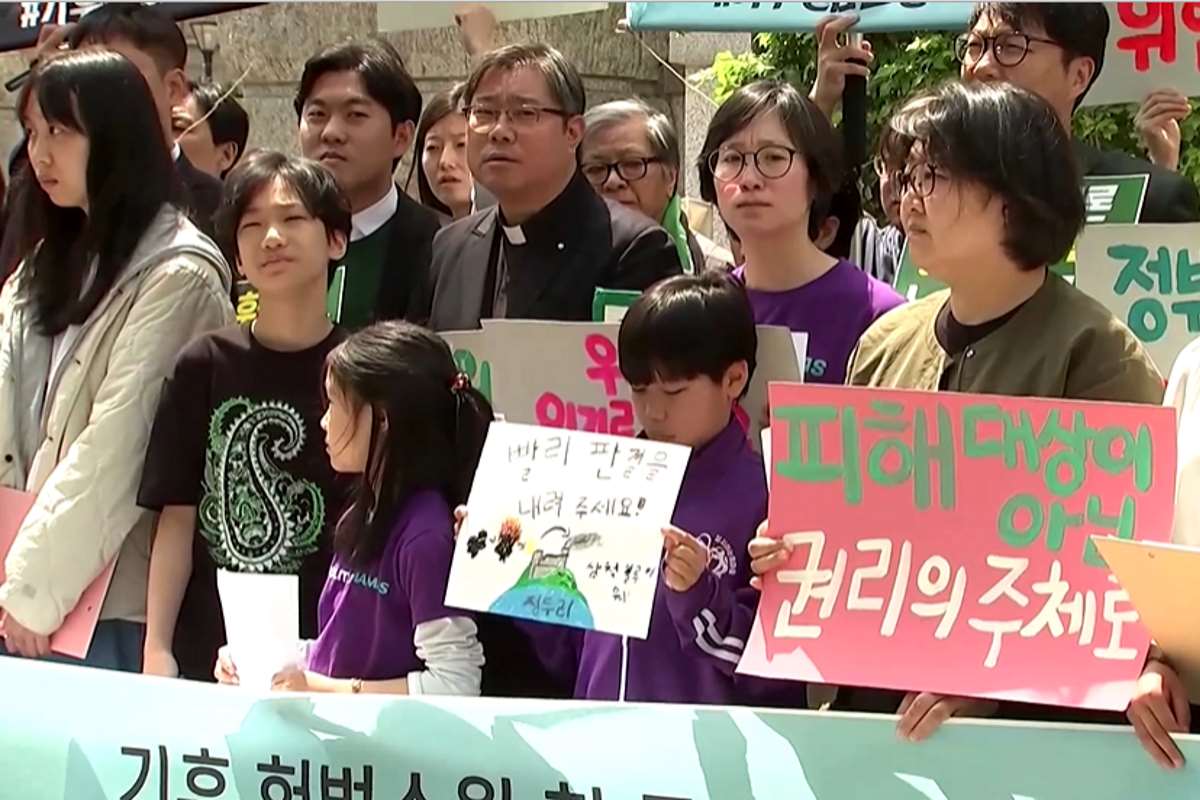For the first time in its history, a court in South Korea will hear the case of some children against the government "failing" to address climate change. Among them there is also a one and a half year old baby

@YouTube
Dubbed “Woodpecker” due to his prenatal kicking when his parents first decided to take the South Korean government to court over insufficient climate actions, “Picchio” wasn’t even born when his parents and those of over 61 other children under five years old filed a lawsuit on their behalf. This case, now known as Woodpecker vs. South Korea, was combined with three similar cases filed between 2020 and 2023, with the first hearing held at the South Korean Constitutional Court last month. Today, May 21, marks the second and final hearing.
The significance of the case
This case is one of the first major climate-related cases to reach a high court in Asia. Plaintiffs argue that the South Korean government is not doing enough to curb greenhouse gas emissions, explains Jiyoun Yoo, a climate justice activist from Amnesty International Korea. Approximately 200 South Koreans have joined this cause, claiming that the government’s proclaimed climate goals are far too lenient.
South Korea’s climate commitments
Under its current Nationally Determined Contribution (NDC) to honor the United Nations’ Paris Agreement, the government aims to reduce the country’s greenhouse gas emissions by 40% from 2018 levels by 2030. The Paris Agreement seeks to limit global warming to 2.7 degrees Fahrenheit above preindustrial levels, with a maximum increase of 3.6 degrees Fahrenheit. However, if all countries maintained the ambition level of South Korea, global temperatures could rise by 5.4 degrees Fahrenheit by the century’s end, according to the Climate Action Tracker.
Plaintiffs’ arguments
Today, the plaintiffs maintain that the government fails to ensure the constitutionally required protection of their fundamental rights. These include the right to life, the right to pursue happiness, general freedom, property rights, and the right to a healthy environment. They also argue that the state fails to fulfill its duty to protect the population from disasters.
The broader implications
“The climate crisis is already at our doorstep, but its effects will be felt even more intensely by future generations,” says Jiyoun Yoo. Cases like this are crucial for safeguarding the rights of citizens. Legal action against a state is often a long and challenging process that requires patience, perseverance, and the courage of these pioneering plaintiffs must be admired and applauded.
Looking ahead
With countries set to update their NDCs next year, climate activists hope this case will compel South Korea to adopt more ambitious climate plans for the period up to 2035.
A parallel in Europe
Meanwhile, in Europe, a historic ruling by the European Court of Human Rights last month favored KlimaSeniorinnen (Swiss Seniors for Climate Protection), a group of 2,000 Swiss women who won a groundbreaking lawsuit.
